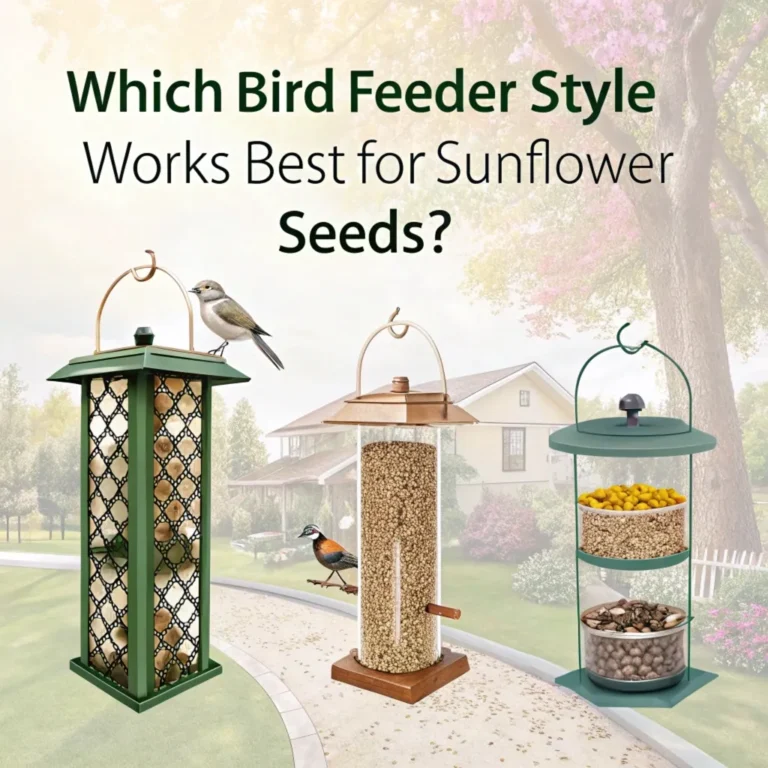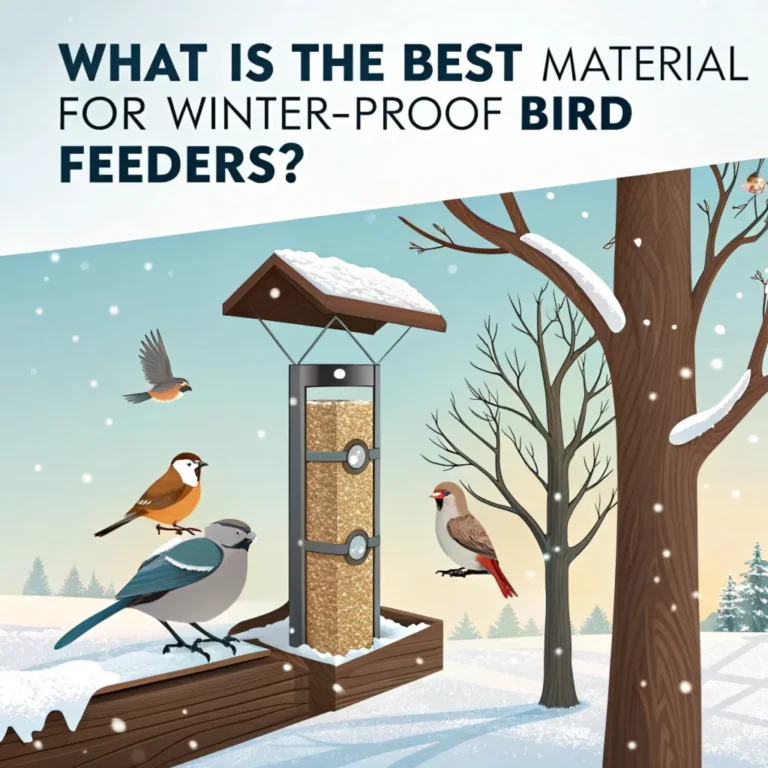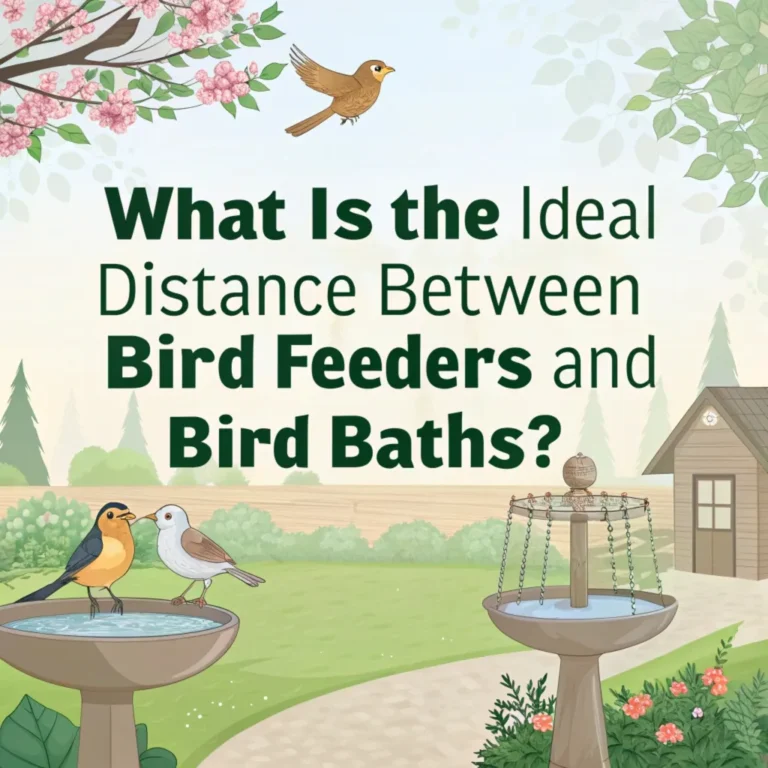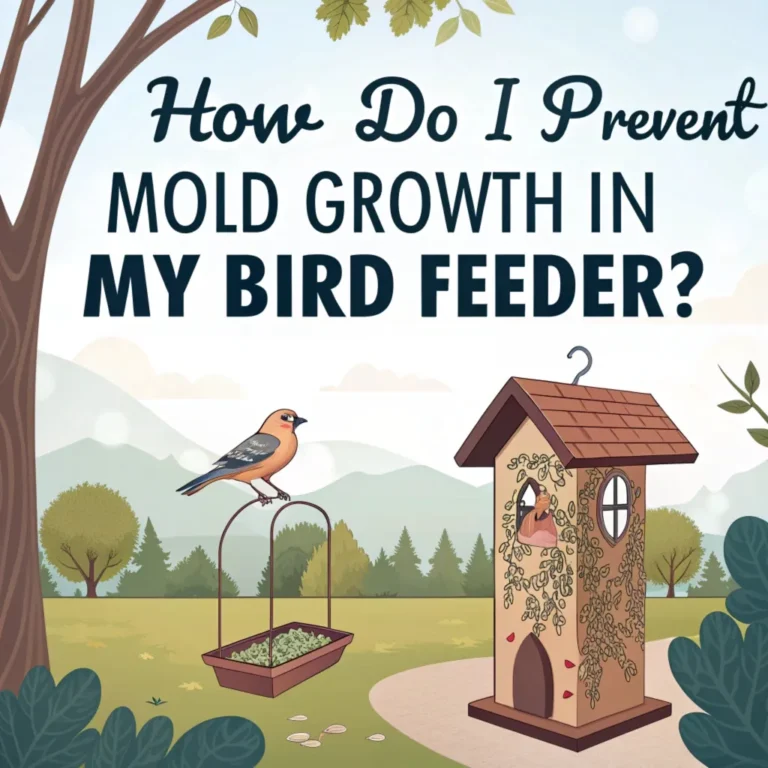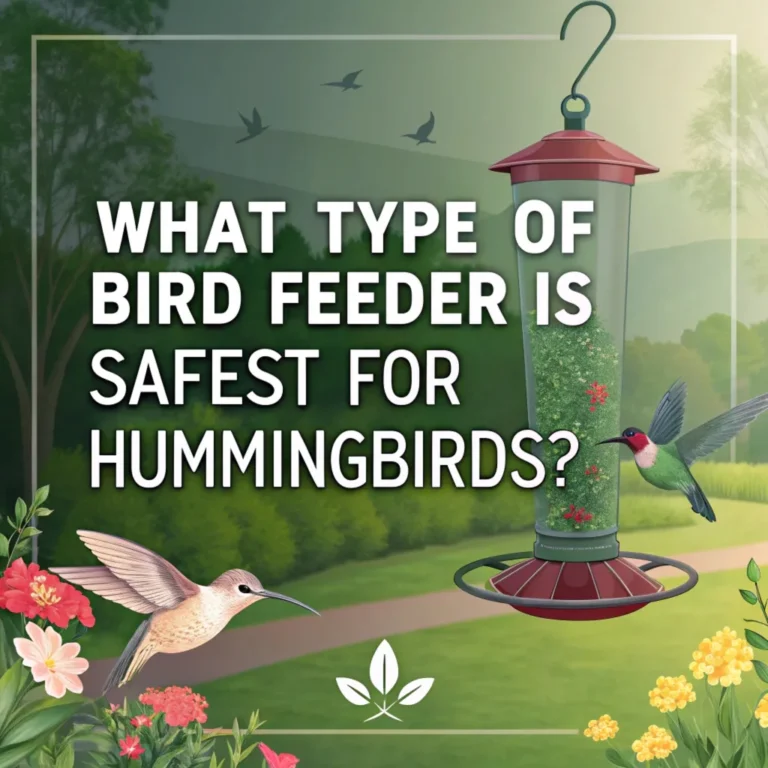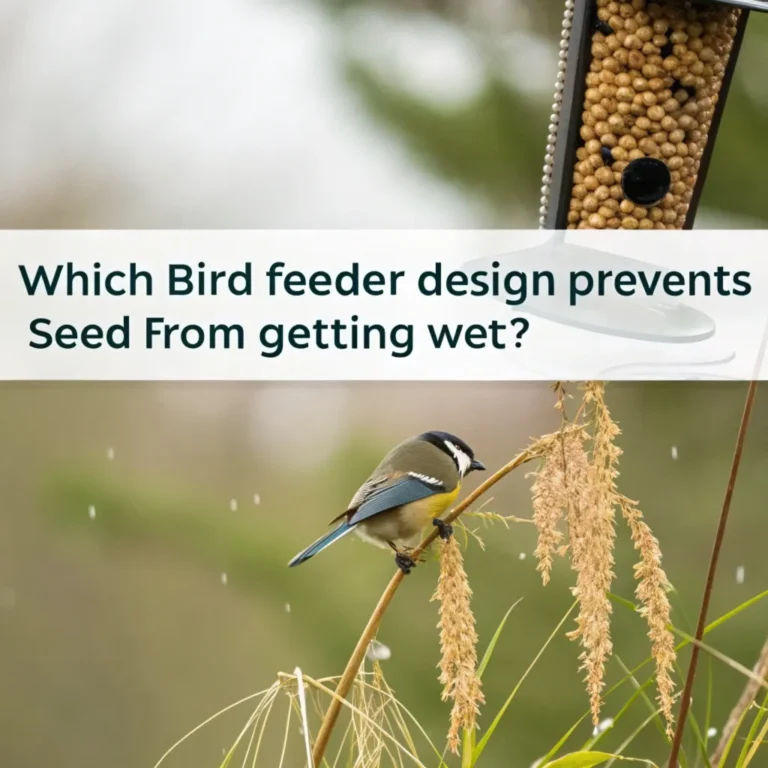What Type of Bird Feeder is Best for Nyjer Seeds?
Nyjer seed feeders attract finches and other small birds to gardens. These feeders need specific designs to hold tiny seeds.
This guide helps you pick the right nyjer seed feeder. You will learn about feeder types, features, and maintenance.
Follow these tips to create a bird-friendly space in your yard. Discover how to bring colorful finches to your garden with the perfect nyjer seed feeder.

Key Takeaways: Choosing the Best Nyjer Seed Feeder
- Mesh feeders offer easy access for small birds
- Tube feeders with small ports prevent seed waste
- Sock feeders are lightweight and easy to hang
- Tray feeders with fine mesh bottoms work well
- Upside-down feeders cater specifically to finches
- Choose feeders with multiple feeding ports
- Look for feeders with seed-catching trays
- Consider durability and weather resistance
- Clean feeders regularly to maintain hygiene
- Place feeders in quiet areas near cover
Understanding Nyjer Seeds and Their Appeal to Birds
Nyjer seeds, also known as thistle seeds, come from the Guizotia abyssinica plant. These tiny black seeds are rich in oil and high in protein, making them an excellent food source for small birds.
Finches, particularly goldfinches, are especially fond of nyjer seeds due to their small size and nutritional value.
Nyjer seeds have become increasingly popular among bird enthusiasts due to their unique properties.
These seeds are not only nutritious but also have a low germination rate, which means they’re less likely to sprout and create unwanted plants in your garden.
This makes them an ideal choice for bird feeders, as they provide sustenance without the risk of spreading invasive species.
The appeal of nyjer seeds extends beyond just finches. Many small songbirds are attracted to these seeds, creating a diverse feeding station in your backyard.
Types of Nyjer Seed Feeders
Several feeder types work well for offering nyjer seeds to birds. Each has its advantages and suits different situations.
Mesh Feeders
Mesh feeders are a popular choice for nyjer seeds. They consist of a fine wire mesh that allows small birds to cling and feed easily. The tiny openings in the mesh are perfect for the small size of nyjer seeds, preventing waste and keeping larger birds from accessing the food.
Tube Feeders
Tube feeders designed for nyjer seeds have very small feeding ports. These ports are specifically sized to dispense the tiny seeds while preventing spillage. Many tube feeders for nyjer seeds also include perches for birds to rest on while feeding.
Sock Feeders
Sock feeders, also known as thistle socks, are mesh bags filled with nyjer seeds. They are lightweight and easy to hang. Birds can cling to the mesh and pull seeds through the openings. However, sock feeders can get wet in rainy weather, so they require more frequent refilling and cleaning.
Tray Feeders
Tray feeders with a fine mesh bottom can be used for nyjer seeds. These feeders offer an open feeding area that allows multiple birds to feed at once. However, they provide less protection from the weather and may lead to more seed waste.
Choosing the right type of nyjer seed feeder depends on various factors, including the species of birds you want to attract, the climate in your area, and your personal preferences.
Each feeder type has its own unique benefits, so consider experimenting with different styles to see which works best in your garden.
It’s also worth noting that some birds may prefer certain feeder types over others. Observing the feeding habits of birds in your area can help you make an informed decision about which feeder to use.
Features to Look for in a Nyjer Seed Feeder

When choosing a nyjer seed feeder, consider these important features:
- Small openings: Ensure the feeder has openings small enough to prevent seed spillage.
- Multiple feeding ports: More ports allow more birds to feed simultaneously.
- Seed-catching tray: A tray at the bottom catches fallen seeds, reducing waste.
- Durable materials: Choose feeders made of sturdy, weather-resistant materials.
- Easy to clean: Look for feeders that can be easily disassembled for cleaning.
Selecting a nyjer seed feeder with the right features can significantly enhance your bird-feeding experience. A well-designed feeder not only attracts more birds but also makes maintenance easier for you.
Consider factors such as the local climate, the types of birds in your area, and your personal preferences when choosing a feeder.
Remember that the best feeder is one that meets both the needs of the birds and your own requirements for ease of use and maintenance.
Placement of Your Nyjer Seed Feeder
The location of your feeder can significantly impact its success in attracting birds. Place your nyjer seed feeder:
- In a quiet area of your garden
- Near natural cover like shrubs or trees
- Away from areas with high foot traffic
- At a height that allows easy viewing and refilling
Strategic placement of your nyjer seed feeder can make a big difference in attracting birds. Consider the natural behavior of the species you’re hoping to attract.
Most small birds prefer to have quick access to cover for safety, so placing the feeder near bushes or trees can make them feel more secure.
Also, think about your own viewing pleasure. Position the feeder where you can easily observe the birds from inside your home, creating an enjoyable birdwatching experience.
Maintaining Your Nyjer Seed Feeder

Regular maintenance is crucial for the health of visiting birds and the longevity of your feeder:
- Clean the feeder every two weeks with a mild soap solution.
- Replace wet or moldy seed immediately.
- Refill the feeder regularly to keep birds coming back.
- Check for damage and repair or replace the feeder as needed.
Proper maintenance of your nyjer seed feeder is essential for the health and well-being of the birds visiting your garden.
Regular cleaning helps prevent the spread of diseases among birds, while prompt replacement of spoiled seed ensures that your feathered visitors always have access to nutritious food.
Remember, a well-maintained feeder not only attracts more birds but also provides a safer feeding environment for them.
Attracting Birds with Your Nyjer Seed Feeder
To maximize the number of birds visiting your nyjer seed feeder:
- Offer fresh seed regularly
- Provide water nearby for drinking and bathing
- Plant native plants that offer natural food and shelter
- Be patient, as it may take time for birds to discover a new feeder
Creating an inviting environment for birds goes beyond just offering food. A well-rounded approach that includes water sources and natural habitat can significantly increase the number and variety of birds visiting your garden.
Native plants not only provide additional food sources but also create a more natural ecosystem that birds find attractive.
Remember that it may take some time for birds to discover and trust a new feeder. Consistency in maintaining your feeding station will eventually pay off with regular avian visitors.
Seasonal Considerations for Nyjer Seed Feeding
Nyjer seeds are particularly valuable for birds during certain seasons:
- Winter: High oil content provides essential energy in cold weather
- Spring: Supports birds during the breeding season
- Fall: Helps migrating birds refuel during their journey
Understanding the seasonal needs of birds can help you optimize your feeding strategy. During winter, the high fat content of nyjer seeds provides crucial energy for birds to maintain their body temperature.
In spring, these nutrient-rich seeds support birds during the demanding breeding season.
Adjusting your feeding habits to match these seasonal patterns can make your garden an essential resource for local and migratory birds throughout the year.
Common Birds Attracted to Nyjer Seed Feeders
Nyjer seed feeders typically attract:
- American Goldfinches
- Lesser Goldfinches
- Pine Siskins
- House Finches
- Purple Finches
- Common Redpolls
Knowing which birds are likely to visit your nyjer seed feeder can enhance your birdwatching experience.
Each of these species has its own unique characteristics and behaviors, making your backyard a diverse and interesting place to observe nature.
Keep in mind that the specific species you attract may vary depending on your geographic location and the time of year. Observing and identifying the birds at your feeder can be a rewarding and educational experience.
Combining Nyjer Seed Feeders with Other Feeding Stations
To create a diverse feeding area:
- Offer different types of seeds in separate feeders
- Provide suet for insect-eating birds
- Include a birdbath for water
- Create feeding zones for different bird species
Diversifying your bird feeding stations can attract a wider variety of species to your garden. Different birds have different feeding preferences, so offering a range of food types can make your yard appealing to more species.
This approach not only enhances biodiversity but also creates a more dynamic and interesting birdwatching experience.
Remember to place different types of feeders at varying heights and locations to accommodate the preferences of different bird species.
Troubleshooting Common Nyjer Seed Feeder Issues
If birds aren’t visiting your nyjer seed feeder:
- Check seed freshness: Replace old or stale seed
- Ensure proper placement: Move the feeder to a more suitable location
- Clean the feeder: Remove any mold or debris
- Be patient: It may take time for birds to discover a new food source
Addressing common issues with nyjer seed feeders can help ensure a successful bird feeding experience.
Sometimes, the solution can be as simple as replacing old seed or moving the feeder to a more attractive location. Regular maintenance and a bit of patience are often key to attracting birds to your feeder.
If problems persist, consider consulting local bird watching groups or wildlife experts for advice specific to your area.
FAQs About Nyjer Seed Feeders
How often should I clean my nyjer seed feeder?
Clean your nyjer seed feeder every two weeks with a mild soap solution to prevent the spread of diseases among birds.
Can squirrels eat from nyjer seed feeders?
Squirrels generally show little interest in nyjer seeds due to their small size. However, some determined squirrels may try to access the feeder.
How long does nyjer seed stay fresh in a feeder?
Nyjer seed can stay fresh for about two to three weeks in a feeder, depending on weather conditions. Replace the seed if it becomes wet or moldy.
Are nyjer seed feeders messy?
Properly designed nyjer seed feeders with small openings and seed-catching trays minimize mess. However, some seed spillage is normal.
Can I mix nyjer seed with other types of bird seed?
It’s best to offer nyjer seed separately in a dedicated feeder, as mixing it with larger seeds can lead to waste and attract unwanted birds.
By choosing the right nyjer seed feeder and following these guidelines, you can create a welcoming space for finches and other small birds in your garden. Remember to maintain your feeder regularly and enjoy the colorful visitors it attracts.
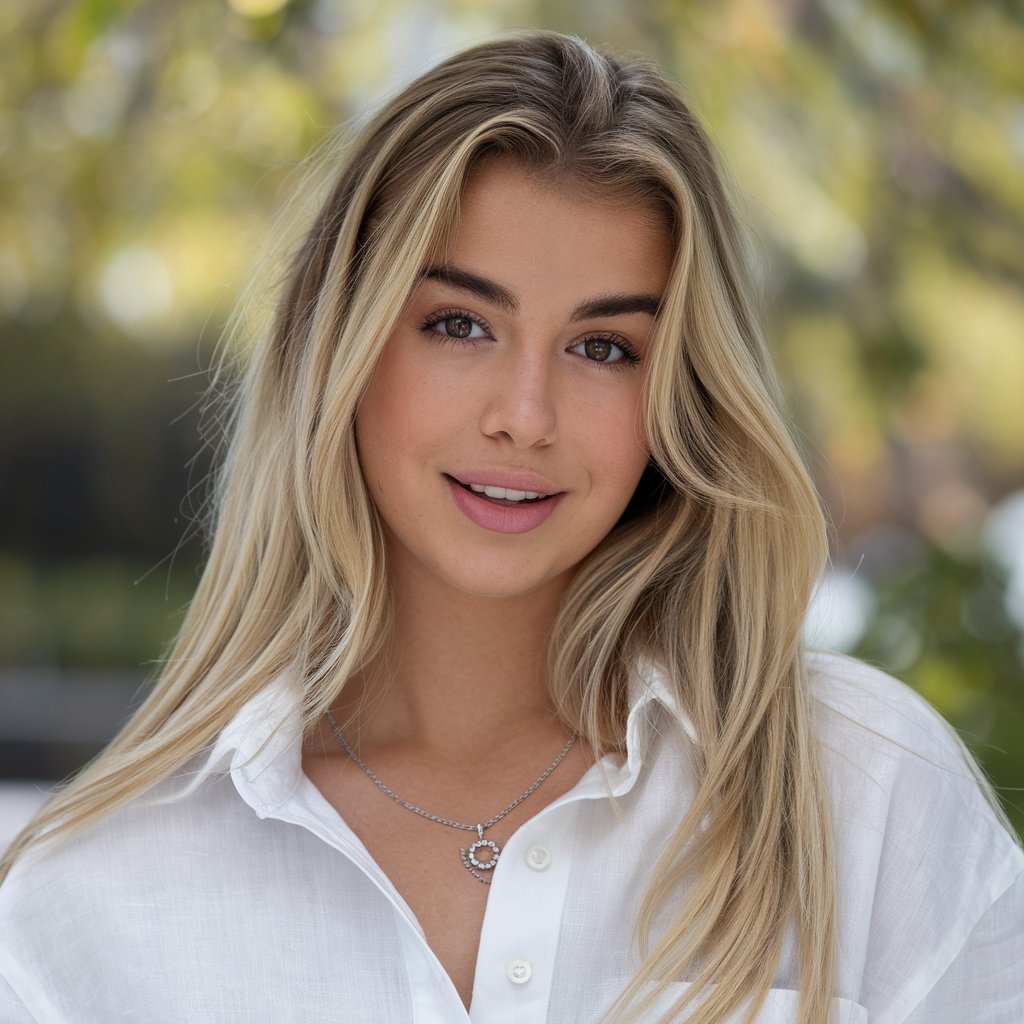
Luna is the passionate founder and author of Birds and You, a website dedicated to sharing her love for birds with fellow enthusiasts. Through her engaging articles and guides, she aims to educate and inspire others to explore the fascinating world of birds. When she’s not writing, you can find Luna observing birds in their natural habitats or sharing beautiful bird photography on Pinterest. Join her on this journey to celebrate and protect our feathered friends!


